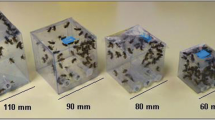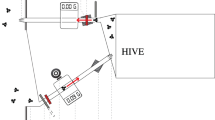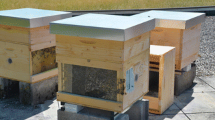Summary.
Unsealed honeybee larvae and the honeybee queen strongly depend on a rich supply of proteins. Worker bees feed both the queen and the larvae with proteinaceous secretions derived from pollen. We interrupted the bees' pollen income by simulating a period of rain (non-foraging) and observed the effects on the care of young and old larvae and on the behavior of the queen. Although the queen's general activity level decreased during non-foraging periods, neither the number of her trophallactic contacts nor her egg laying rate was significantly affected. In contrast, the impact on the nursing of young (two-day-old) larvae was severe: nursing periods diminished to 16% of the initial level. The negative effects persisted until the fourth day after the artificial rain ended. For older (five-day-old) larvae, nursing periods were reduced only until the third day, after which they increased again, even though the non-foraging conditions continued. The number of larvae in the colony also changed with the weather conditions. In conclusion, faced with prolonged non-foraging conditions, the colony responds with two age-dependent resource saving strategies: (1) nursing of young larvae declines and (2) with older larvae the workers reduce the nursing efforts for a few days, then, as the larval population declines through cannibalism, the nursing periods granted to the surviving old larvae increase and nurses favor the older larvae. Older larvae represent a greater investment of resources and are closer to the final capping stage, when they no longer require feeding.
Similar content being viewed by others
Author information
Authors and Affiliations
Additional information
Received 19 August 2002; revised 12 December 2002; accepted 10 January 2003.
RID="*"
ID="*"Author for correspondence.
Rights and permissions
About this article
Cite this article
Schmickl, T., Blaschon, B., Gurmann, B. et al. Collective and individual nursing investment in the queen and in young and old honeybee larvae during foraging and non-foraging periods. Insectes soc. 50, 174–184 (2003). https://doi.org/10.1007/s00040-003-0644-x
Issue Date:
DOI: https://doi.org/10.1007/s00040-003-0644-x




